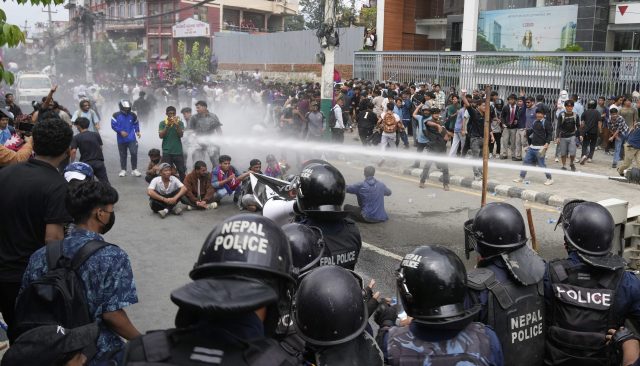
When protests against corruption raged in countries across Southeast Asia — Indonesia, the Philippines, and Malaysia — not many would have anticipated that it was going to spill over to Nepal. But a long-building public frustration against Nepal’s establishment for its greed, corruption, and failure to deliver was sure to turn into some form of protest in this regional wave. Unfortunately, not only did the government fail to see the initial momentum of youth mobilisation on social media, but instead imposed a suicidal ban on most social media platforms, which acted as the immediate trigger for the current demonstrations, forcing the youth onto the streets. What unfolded on the first day of the protests was a pinnacle of the state’s brutality led by PM Oli and his men, whose arrogance and greed for power had already taken at least 19 lives.
The Gen Z–led demonstrations must be seen against the backdrop of how recent events in Nepal have unfolded. It is not merely a protest against the social media ban. Like in Indonesia and the Philippines, Nepali social media users had also taken to platforms like TikTok and Instagram to publicly call out the children and relatives of MPs and politicians for their lavish lifestyle and travel, while a majority of the country was reeling from poverty and hardship. Publicising a series of high-profile corruption scandals, they mentioned that taxpayers’ money was being used to fund the lifestyle of the “nepobabies.”
Although termed by some as “online bullying” or “lifestyle policing,” the Nepali youths’ initial outpour of anger on social media was their first public and collective statement of discontent with the political class. Most Gen Zs in Nepal have grown up seeing the same faces govern the country, irrespective of the number or scale of corruption scandals they have been implicated in, with apparent impunity. They have seen how these senior politicians have built their networks with cronies, weeded out competition, and played dirty political games just to secure their political future into perpetuity.
For instance, the current Oli-led government is an unusual coalition between Nepal’s two largest parliamentary parties, the Nepali Congress and CPN-UML, which is widely seen as an effort to serve the personal interests of the top leaders of both parties. Therefore, the prevalent anger has always been against this entire group of “older” leaders, irrespective of their political party or position in the government. Interestingly, younger leaders of these establishment parties have also lost credibility and popularity due to their silent subservience.
Another important factor to consider is the occasional mobilisation of pro-monarchy and regressive forces intended to exploit the public frustration for systemic change. Only months ago, Kathmandu saw a series of demonstrations demanding the reinstatement of the monarchy, which dissipated after the government’s arrest of some of its leaders who instigated violence. Although opportunist leaders and politicians frame the current discontent as a need for monarchy, the ongoing protests must serve as a reminder that Nepali youth have grown up in a democracy and will oppose any effort to curtail their democratic freedom.
PM Oli and his government overlooked this simple fact and, instead of taking corrective measures to dissuade the pressure building up on social media, went on to ban the very platforms in the name of national sovereignty and compliance by big tech companies. While this move triggered street demonstrations led by Gen Z throughout the country, Oli’s arrogance has led to a loss of young lives, enraging the entire country and setting off a much larger movement against not just his government but the whole establishment. In this highly volatile situation, where traditional parties and leaders face the wrath of an agitating public, the security agencies, civil society leaders, the media, and the international community have a critical responsibility to help the country out of the spiralling anarchy.
The writer is from Nepal and is a researcher on politics and international affairs